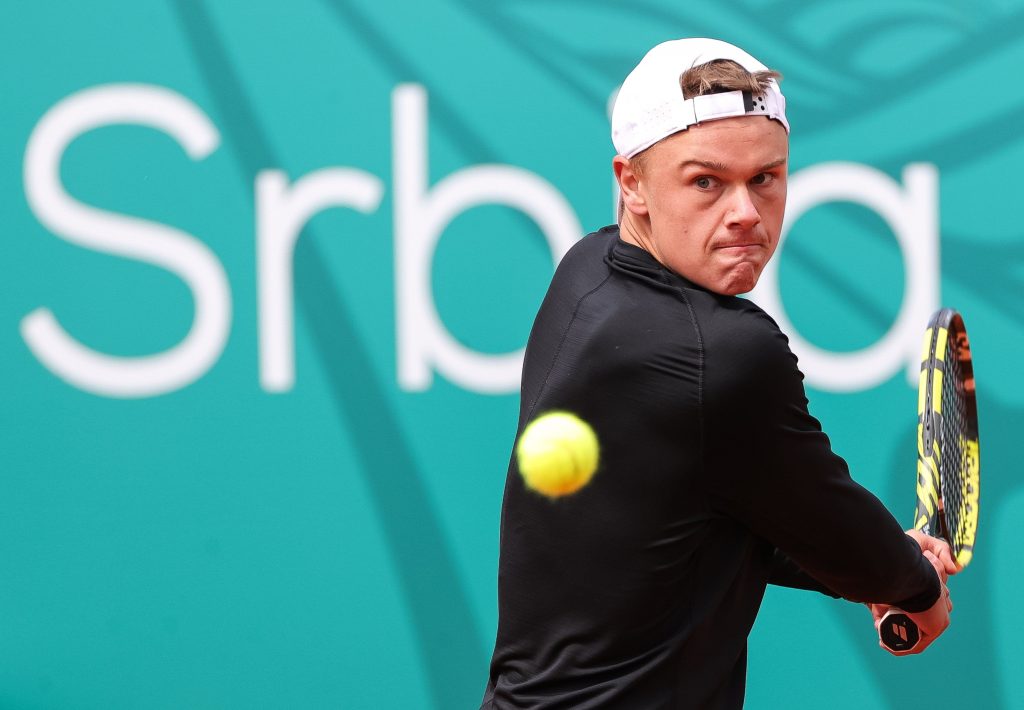The Stefanos Tsitsipas trophy-grabbing victory over Alejandro Davidovich Fokina at the Monte Carlo Masters can be summed up in one word: Forehand. Or even better: Forehands.
Consider this. What makes a good clay court tennis player? Sure, grinding, suffering, defense and forcing your opponent to play one more shot is a winning prototype for some players. But for others like Tsitsipas, Matteo Berrettini and players with explosive forehands, there is clearly another path.
And that path hot-foots it around a ball that might look like a backhand.
According to statistics by ATP data provider Infosys, Tsitsipas hit 127 forehands to 86 backhands in the final against ADF. That’s a ratio of roughly 3:2. By contrast, Foki hit 109 forehands to 104 backhands– much closer to 1:1.
By hitting so many forehands, both the regular variety and run-around forehands, Tsitsipas played on his terms, looked to hit plus-one forehand, took control of points early and dominated the short rallies 41 to 27. The category of 0 to 4 shots was where the bulk of the match was played.
This is a strategy for how players with a big forehand can dominate on clay, and it ain’t grinding.
Let’s take a look at exactly how crushingly effective this tactic can be– by considering factors that go into hitting run-around forehands on clay.
Choice
If a ball is hit toward a player, their mind typically makes an unconscious decision on whether to take the stroke as a forehand or backhand.
But what if the choice becomes conscious? What if a player decides emphatically that they’re going to try to take as many balls as possible as forehands like Tsitsipas did yesterday? Tsitsipas reportedly hit 65 run-around forehands against Davidovich Fokina. That’s more than half of all his forehands and a heck of a lot of running around. It paid off.
Direction
Let’s acknowledge that a run-around forehand is an ad-court phenomenon for right-handed players because a ball hit to that side is, at first blush, a backhand. In this match, ADF’s returns and rally balls to the ad court were all-too-often ambiguous enough that Stef had no trouble turning them into forehands.
How do you get an opponent to cough up ambiguous balls? If we’re talking about a plus-one, it starts with the serve. You do it by serving to very specific spots that yield those imprecise returns. Weak returns. And that comes with good scouting– because different players produce different results.
Here’s the statistical gem in this match: In the ad court, Tsitsipas hit 67% of his first serves and 75% of his second serves out wide to ADF. Nothing shocking about that, right? Stef serving mostly to a righty’s backhand in the ad court. So why didn’t ADF’s other opponents do that? In the semifinals, Grigor Dimitrov placed only 28% of his first serves to that out-wide spot in the ad court against ADF. In the previous match, Taylor Fritz put only 32% in that spot. Needless to say, Dimitrov and Fritz didn’t get the forehands they needed to beat Davidovich Fokina.
Speed
The speed of the ball– and its cousin, the speed of the surface– can have a major impact on the ability to run around a ball. That’s the beauty of clay. The slower surface allows players like Tsitsipas, Berrettini– and to the greatest extent of all, Rafael Nadal– the time required to run around to hit the desired forehand. It’s the tactic that’s always been there right under our noses.
Footwork
On any surface, the ability to hit run-around forehands effectively requires superb footwork. This is a very specialized area of tennis technique, and Tsitsipas does it exquisitely. He’s a phenomenal athlete with great feet.
Accuracy
If you opt to run around a backhand to hit a forehand, you have to make the shot. Who among us hasn’t decided to run around a ball, only to think as we make contact: “This was a bad idea.”
Tsitsipas was incredibly accurate against ADF. The official scorer counted only 11 unforced errors in total from the Athenian, a stat which also includes backhand errors.
Damage
Finally, when hitting run-around forehands, particularly as plus-ones, the idea is to create damage for opponents. Tsitsipas did just that to Davidovich Fokina, who committed 27 unforced errors for the match.
In summary, a run-around forehand can make quick work of opponents, especially on clay. Nadal has always known this, but Tsitsipas is also raising the tactic to an art form with brilliant spot serving. This plan earns him the forehand opportunity-balls he needs to win championships.

















